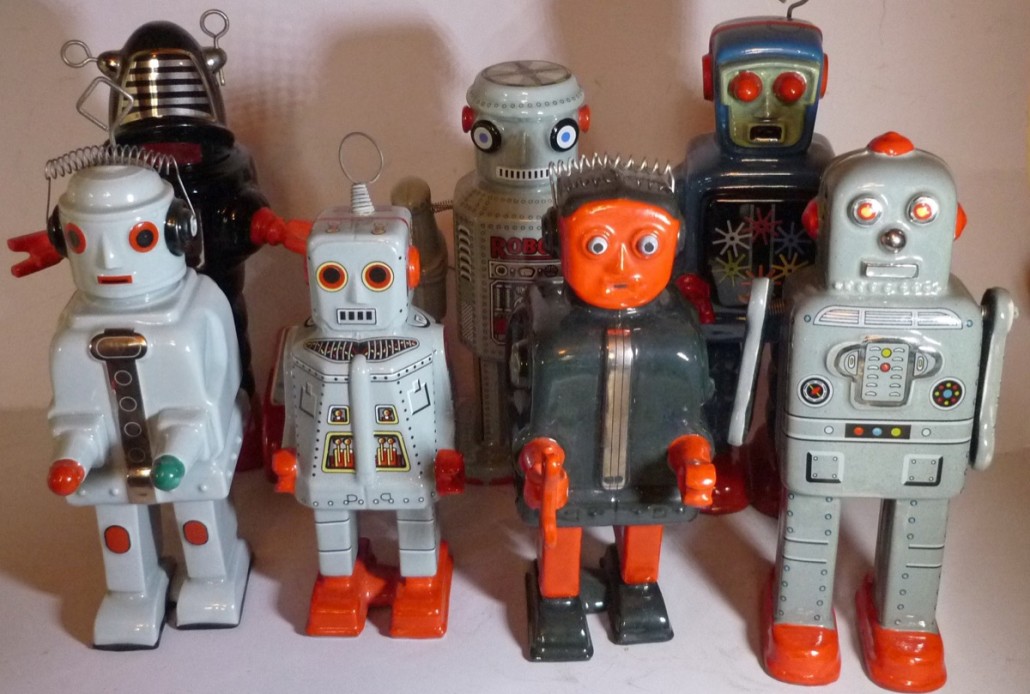
LONDON – It was one of those impulse purchases encouraged by expert salesmanship combined with my love of gadgetry and the excuse (handy during the ensuing persuasive discussion with the Business Manager, Mrs. P) that a robotic vacuum cleaner would save her both time and energy. It sort of works, although it eats rechargeable batteries and never quite reaches into the corners.
My ambition is to own a robot like the ones in Isaac Asimov’s short stories but without the angst when they go wrong. It was Asimov, you will recall, who penned the Three Laws of Robotics, but they are invariably broken. Oh, and mine must be able to type.
None of this was an issue when I was a boy. Saturday matinées at the local picture house, Buck Rogers, Captain Marvel, Dan Dare’s exploits in Eagle comic strips and rainy lunchtimes spent devouring science fiction stories sealed my fate. I was a schoolboy sci-fi junkie.
I was never a fan of Dr. Who, but Star Trek and Lost in Space were required viewing, with Robby the Robot my all-time favourite character. He first appeared in The Fantastical Island, a sci-fi magazine story published in 1935. In an Asimov story in 1940, he was a robot built to look after children, but in both cases his name was spelled with an “ie.”
Robby proper was a 7-foot mechanical servant in Forbidden Planet, a 1956 movie after which he became something of an icon. Lost in Space, a U.S.-made TV spin-off series ran three years from 1965.
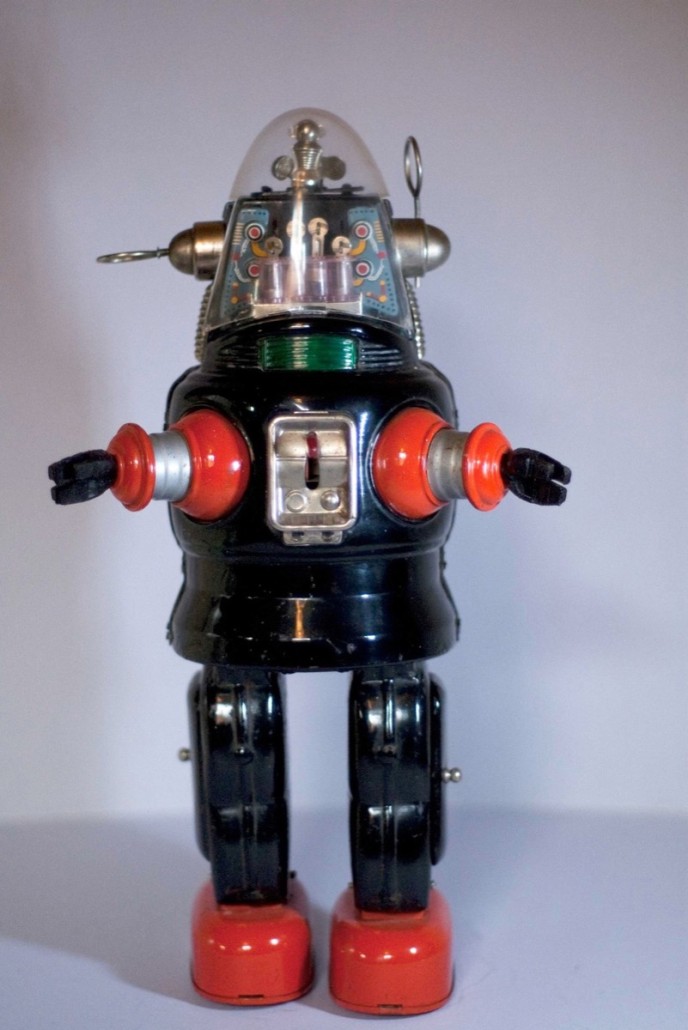
I continue to be on the lookout for a toy Robby to add to my little collection of four of his compatriots. Each is plastic and battery-operated and cost very little from car booters clearing out their kids’ unwanted toys.
Two are clever little fellows who recite manic messages of goodwill each time buttons on their heads are pressed, while a third does nothing, basically because the battery compartment is missing one set of connection terminals, so he remains inert.
My favorite, though, is the one whose torso lights up with a clever moving panorama of space ships, shooting stars and planets as he trundles towards you in menacing fashion.

Sadly, none is worth much more than what we paid for them. All bear the ubiquitous “Made in Hong Kong” mark and are not really in the frame when it comes to the “Investments for My Retirement.” But as the gadget freak I am, they’re great fun and highly treasured.
The appearance of the robot coincided with the single most important event of the 20th century: space travel. It started in 1957 with the first Russian Sputnik satellite orbiting the earth, heralding the Space Race.
At around the same time, Japanese toy makers flooded the market with brash but brilliant robots, as well as space rockets, ray guns, spacecraft and moon landing vehicles, spurred on by the Cold War competition for supremacy. The result was a rapidly changing array of toys that were obsolete almost as soon as they hit the toyshop shelves.
Fortunately, some farsighted adults had the sense to rescue examples and prevent their offspring from playing with them. Some of the rare examples can today be worth thousands if they remain in mint condition and are complete with their original boxes.
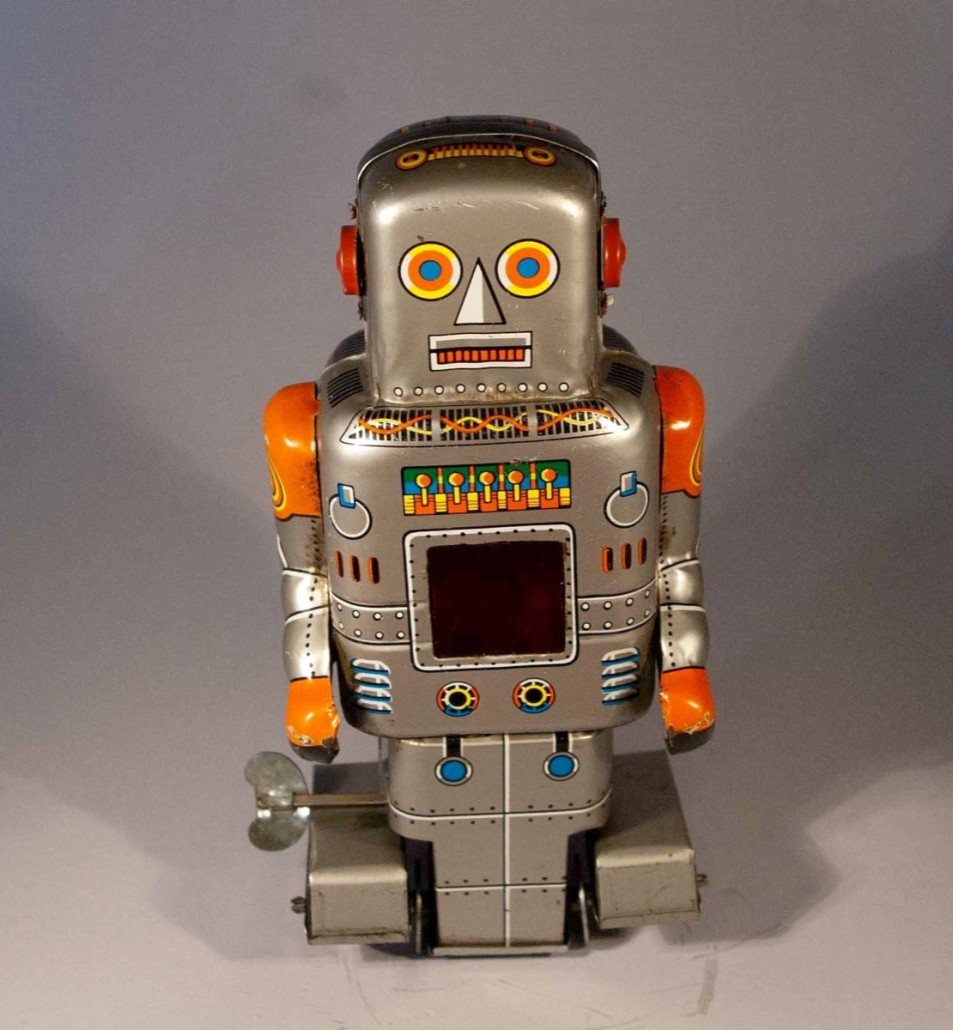
In 1997, Sotheby’s sold a “Machine Man” robot, one of rarest of the exclusive so-called “Gang of Five” made by Masudaya in Japan in the late 1950s and early ’60s. It fetched $74,000 (£48,625). Only 10 or 15 original examples are known to exist.
The battery-operated red lithographed tinplate toy has an on/off switch on his chest, green translucent plastic eyes and mouth panel and amber translucent plastic convex ear panels. Modern replicas can be had for a fraction of the price. Look for the Masudaya trademark, a TM monogram in a diamond.
Other names and their respective trademarks to watch for include: Nomura (TN in a diamond); Yonezawa (Y on a leaf-shaped reserve); Yoshiya (KO on a diamond); Ichida (bunch of grapes design on roundel); Bull Mark (running bull with the name); Sconosciuto (N in triangle with diamond at apex); Yoshiya (SY in diamond); Shudo (name); Ohta (K in circle); Aoshin (ASC in diamond); Toplay (three fingers in salute Girl Guide style and TPS on ‘bangle’); Bandai (old English ‘B’ in box); Daiya (name in diamond); Alps (name in mountain line drawing); Daishin (DSK in diamond); Linemar (Line Mar Toys in circle); Mastutoku (MT); Asahi (Father Christmas with ATC on sack); Mansei (‘HAJI’ in oval); Usagiya (rabbit head); Horikawa (SH in a diamond).
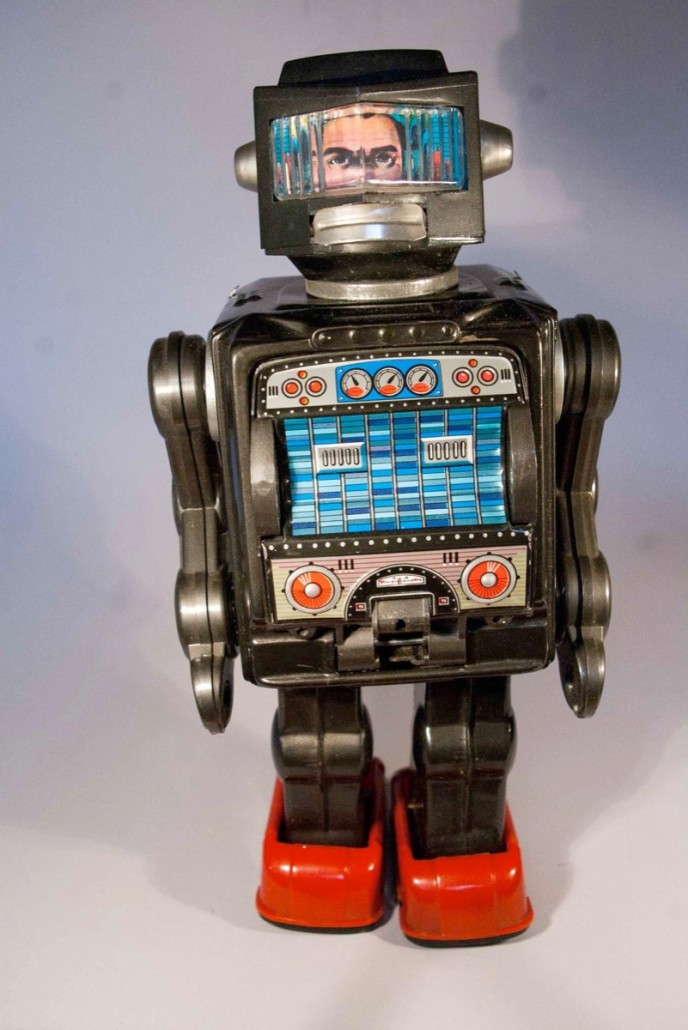
The joy of collecting robots is the naivety of some of the once futuristic designs and the wonderfully inventive names they were given. Look for “Sparky,” “Mr. Machine,” “Laughing Robot,” “Silver Ray Secret Weapon Space Scout,” “Television Spaceman,” “Mego Man,” “Mr. Mercury” and many more.
“As always with toys, buy the best you can afford and preferably those with original boxes. Watch out for rust and metal fatigue, always a problem with tinplate, and don’t forget to take along a selection of different batteries to try out potential purchases … they’re never included you know.
Meanwhile, I thought my search for a Robby the Robot may be over: on Dec. 9, British auctioneers Ewbank’s in Surrey will sell a single-owner collection of 16 lots of robots and other space toys with LiveAuctioneers providing the online bidding. A boxed Nomura Robby that walks, its dome lights, pistons move up and down and its antenna turns and is estimated at £400-£600.
Accompanying Robbie is “Dux Astroman,” an early classic plastic battery-operated remote control robot made in West Germany in about 1960, that also walks, bends over, opens and closes its arms, while its chest and head glow in the dark (estimate £400-£600).
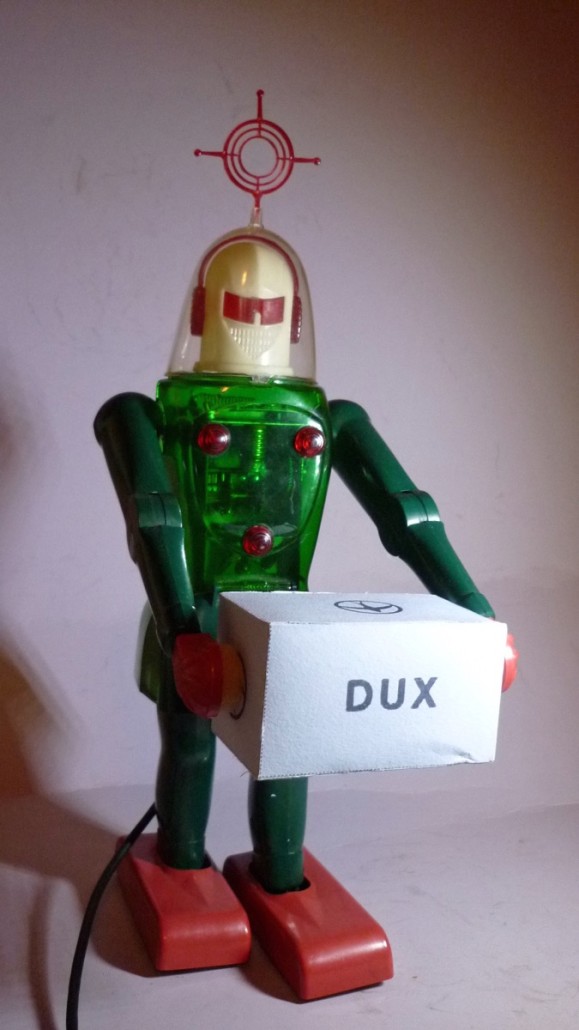
Masudaya’s “Planet Explorer,” one of their tinplate battery-operated spaceships has a non-fall action courtesy of a metal rocker in the base that detects edges and alters the direction of travel. It is in mint and boxed condition, and is estimated at £100-£150, while “Robot With Spark,” a 1962 toy by Yoneya of Japan produces sparks in a window in its body created by an internal flint mechanism. It is estimated at £60-£100.
Further enquiries: 01483 223101.
___
By CHRISTOPHER PROUDLOVE



